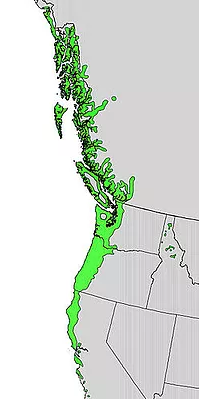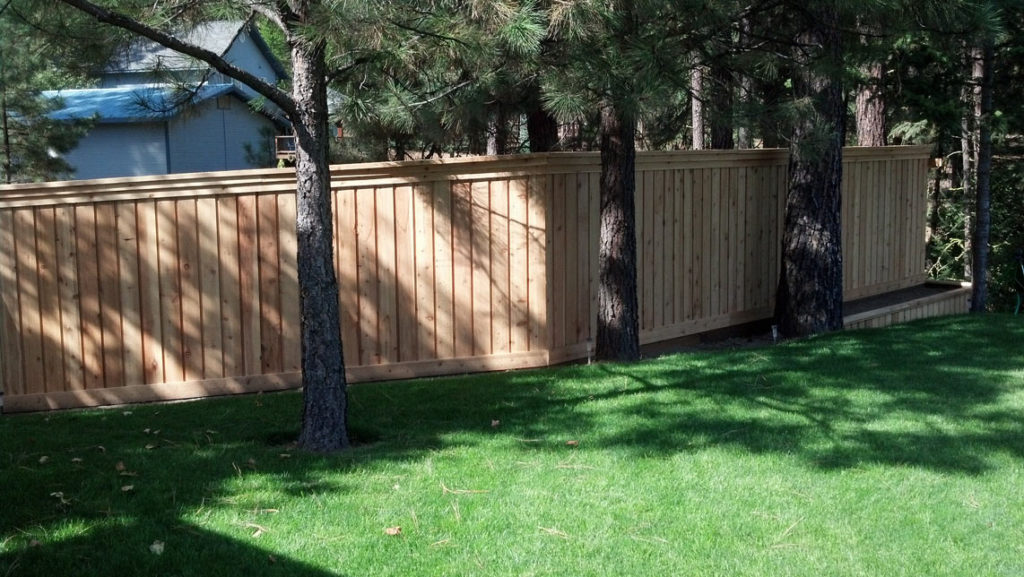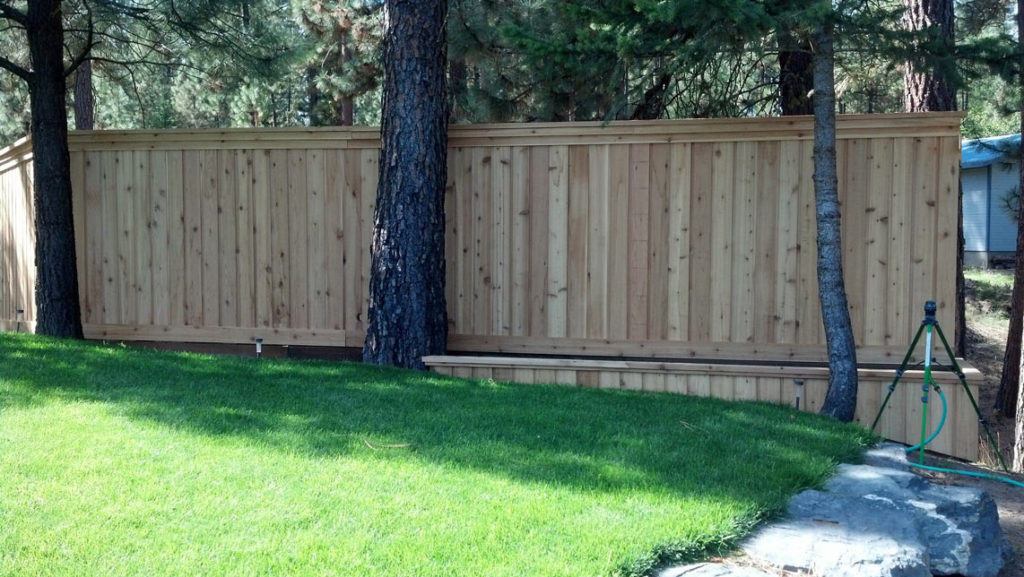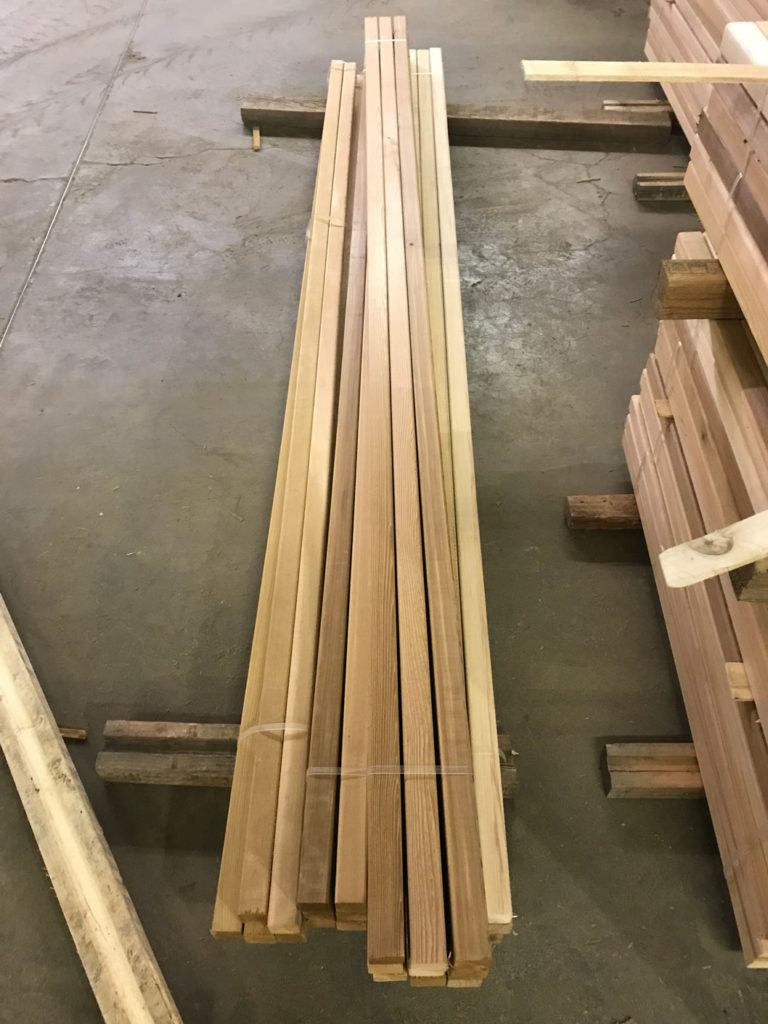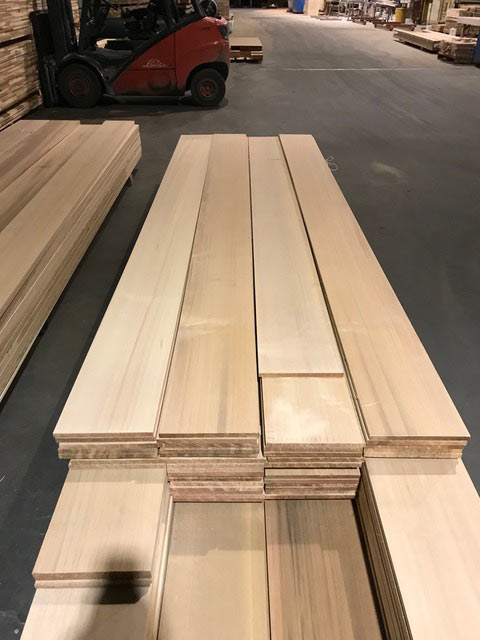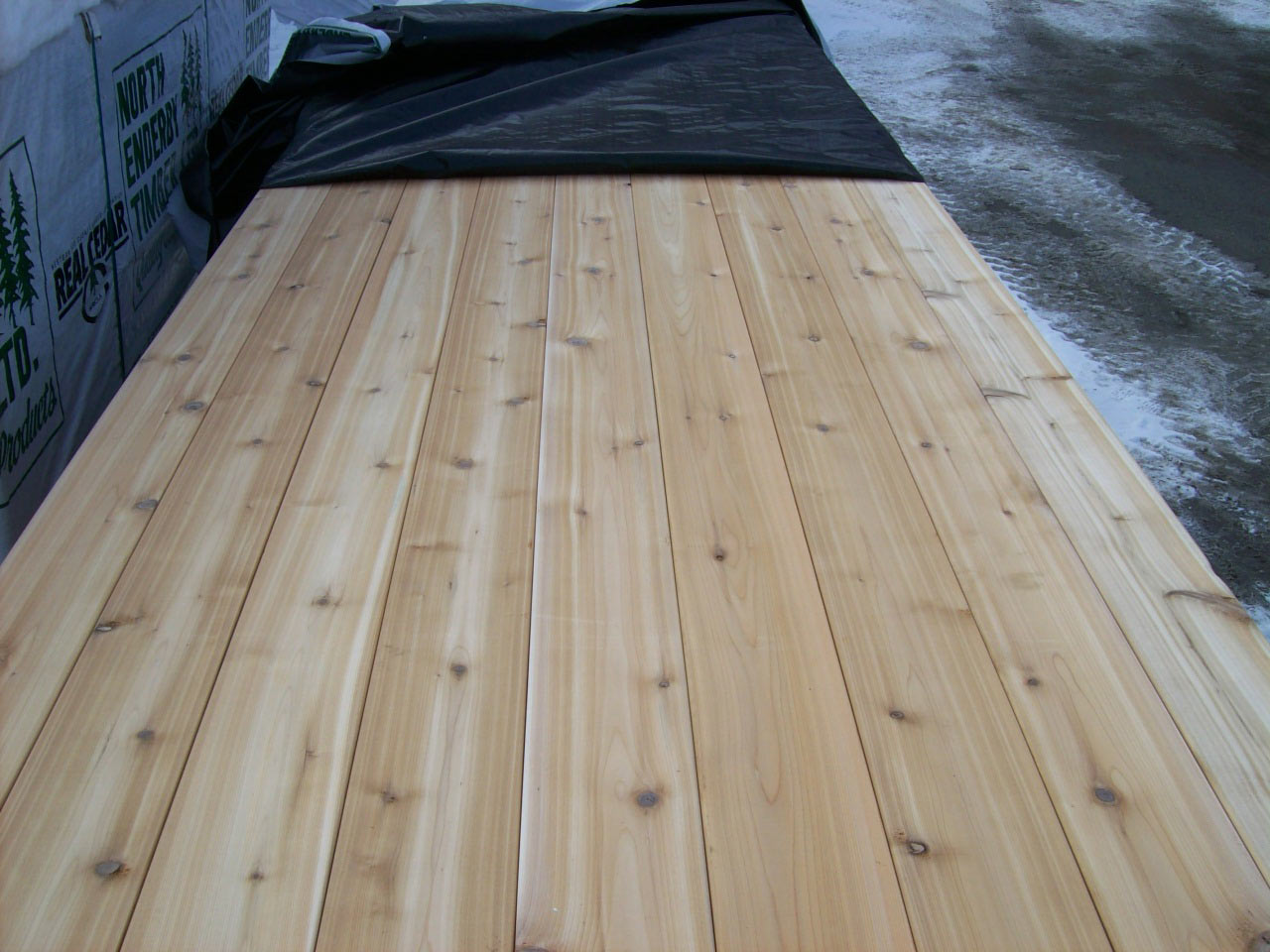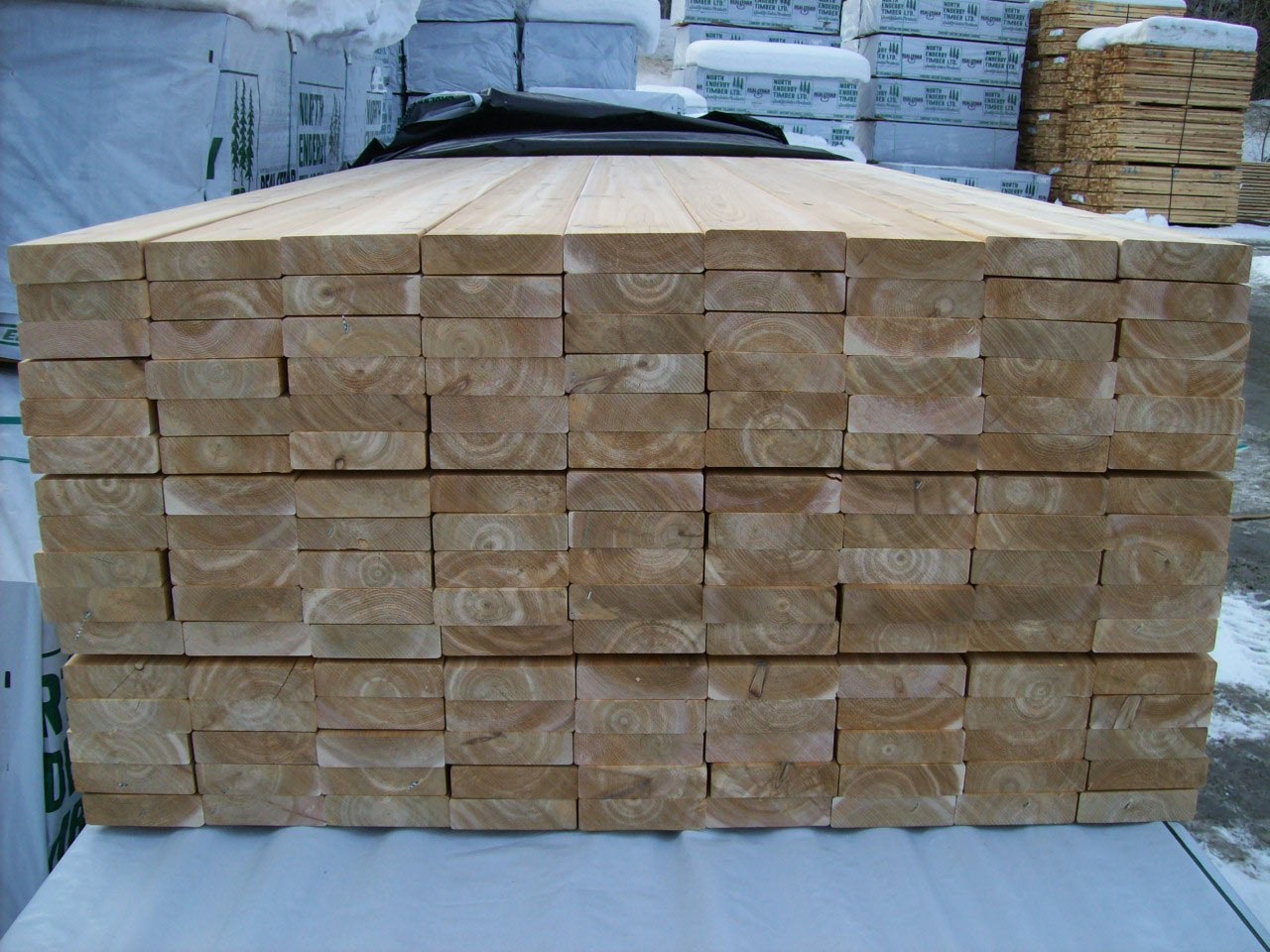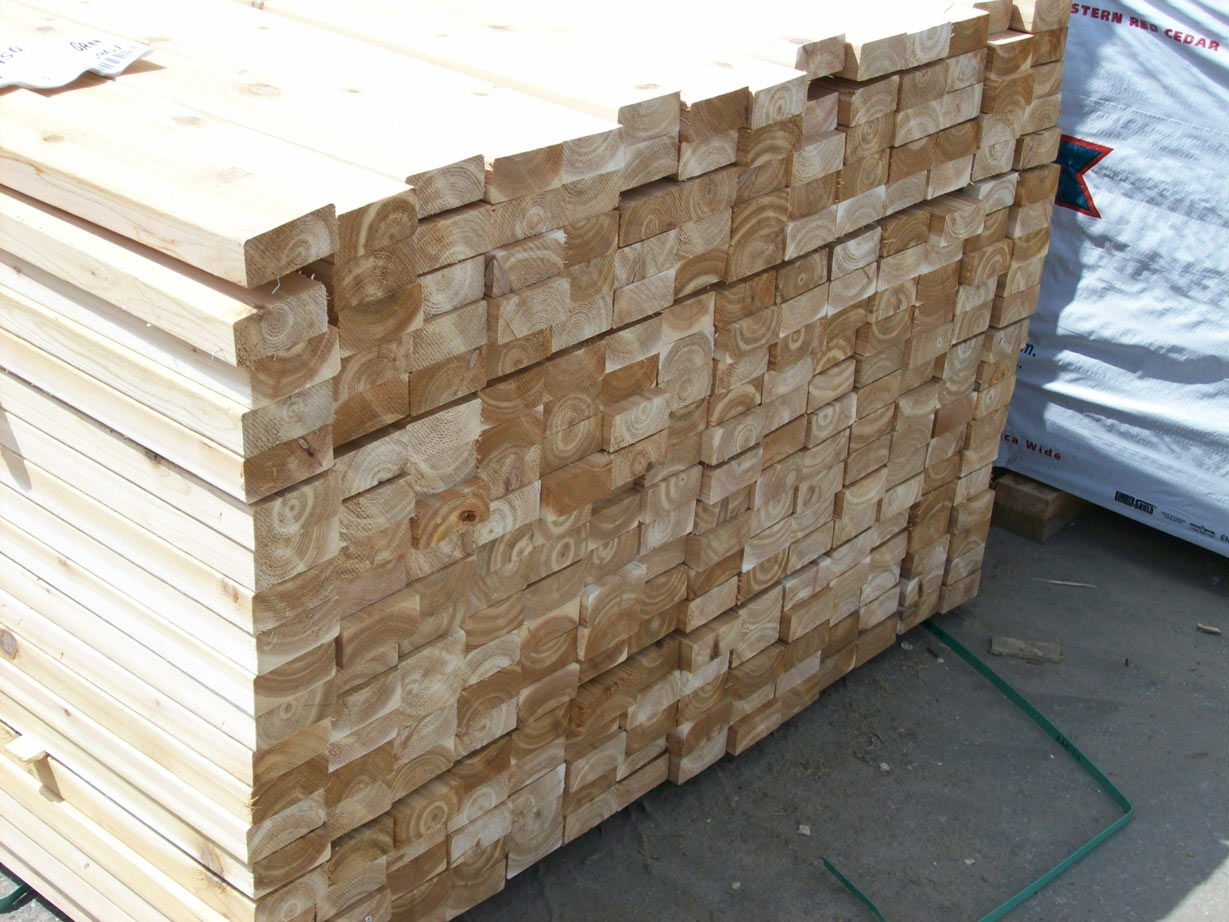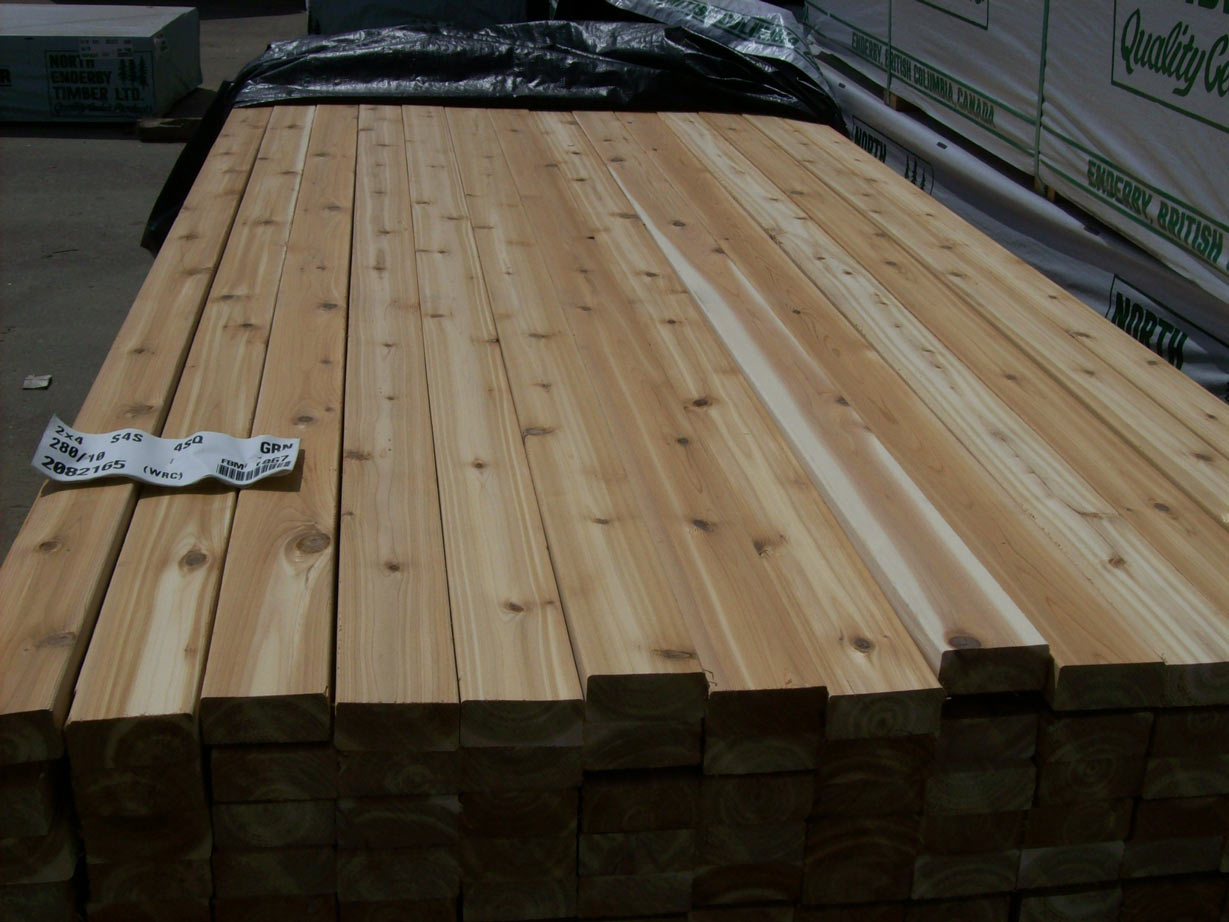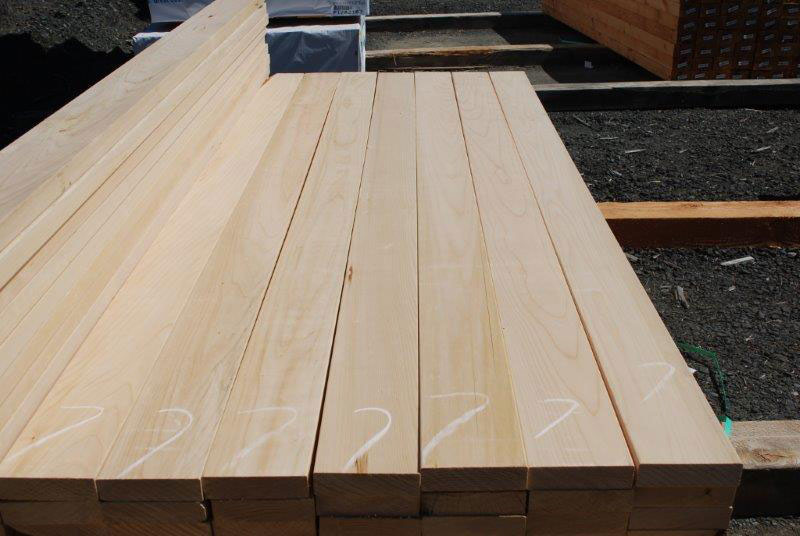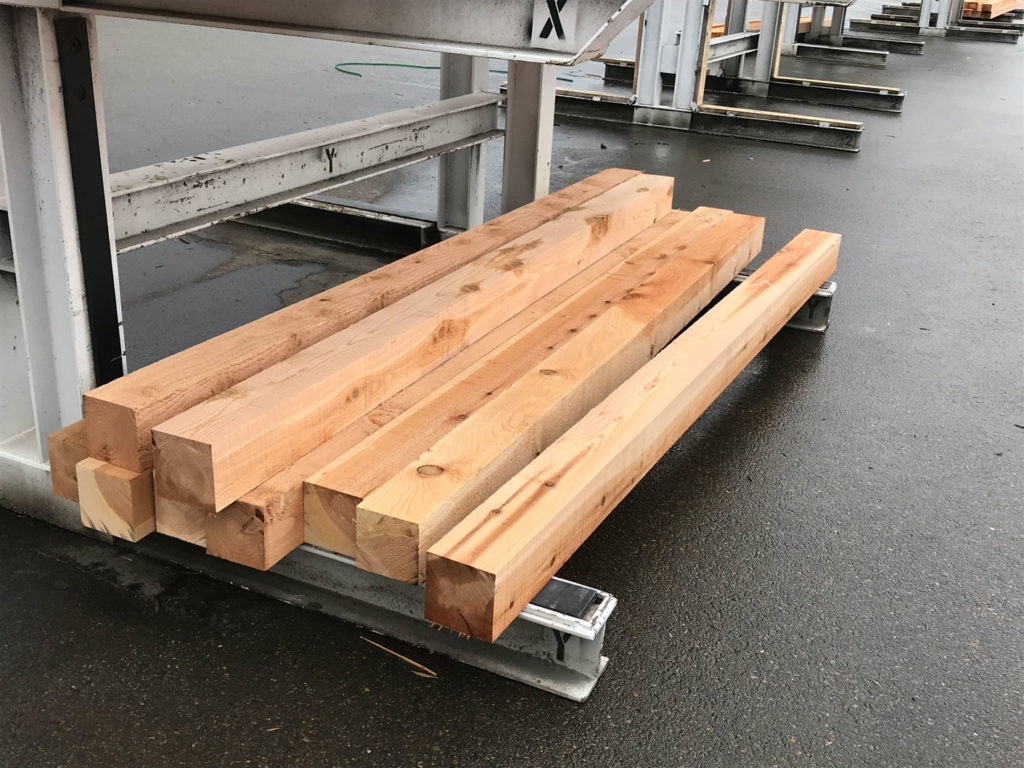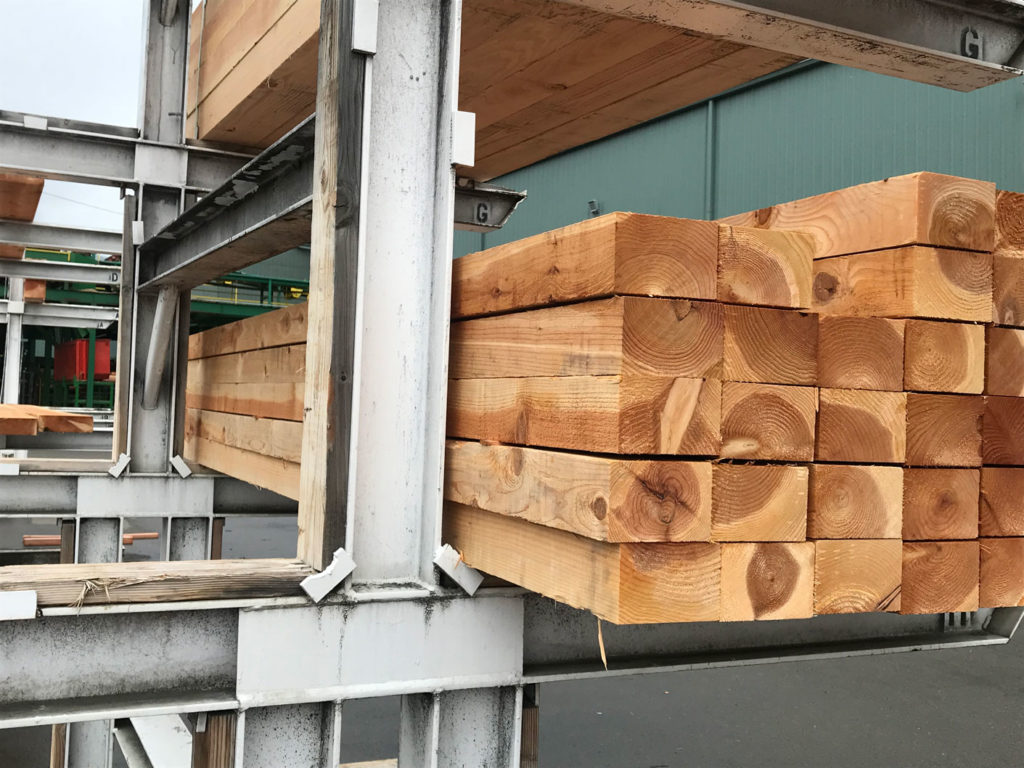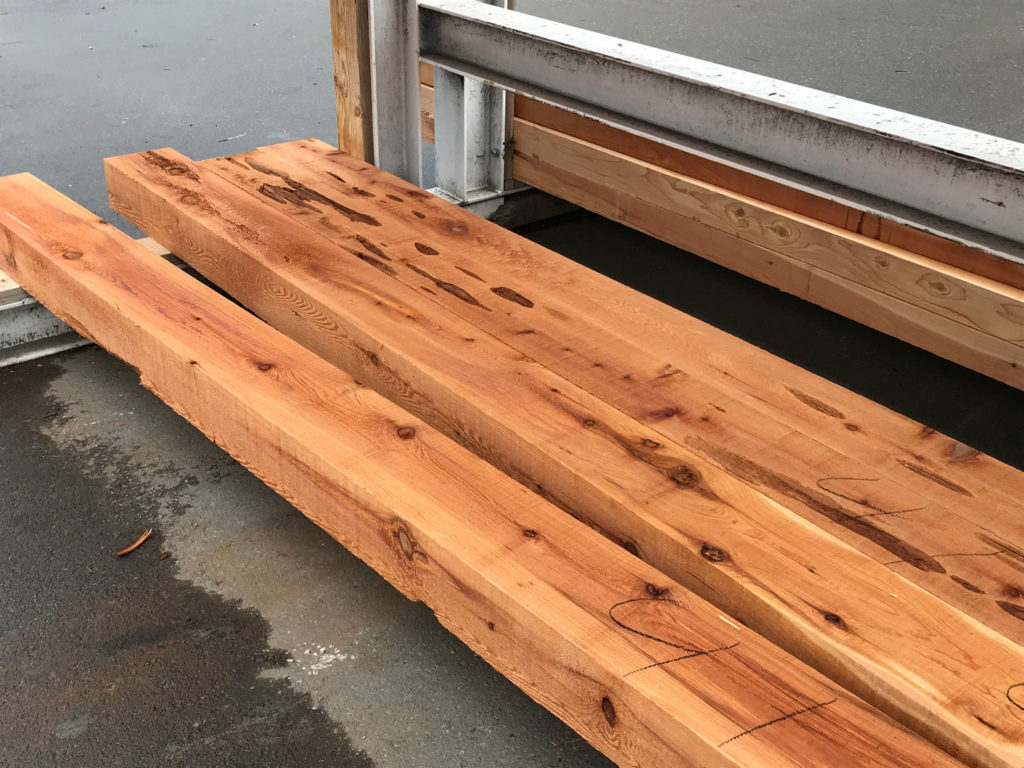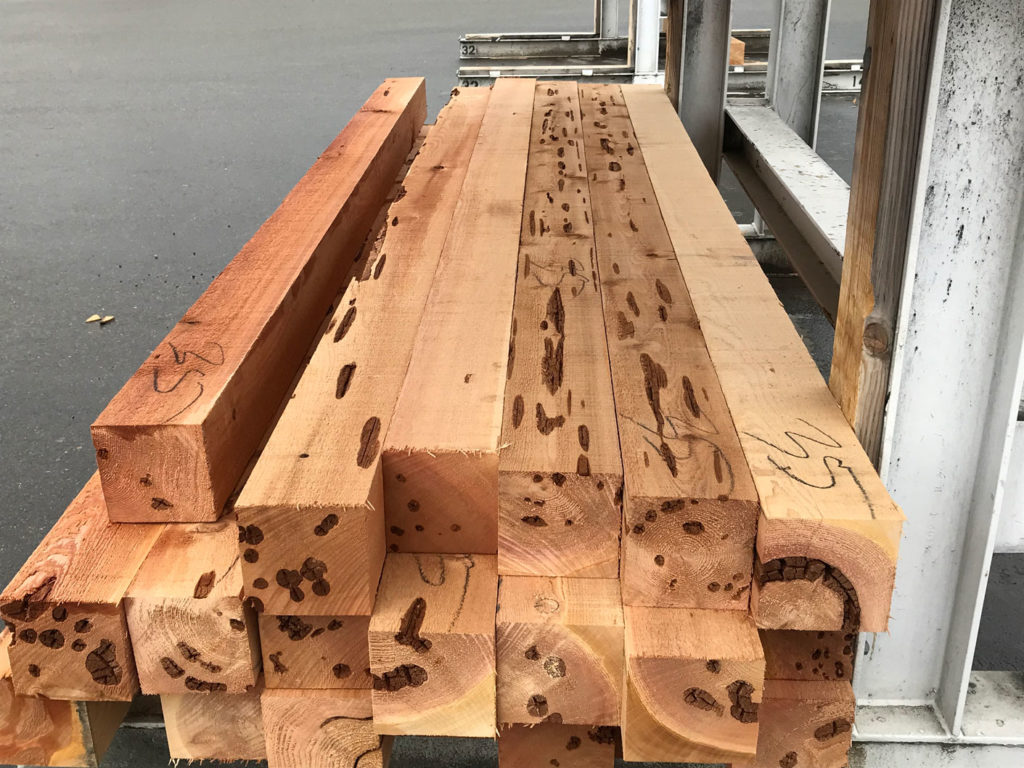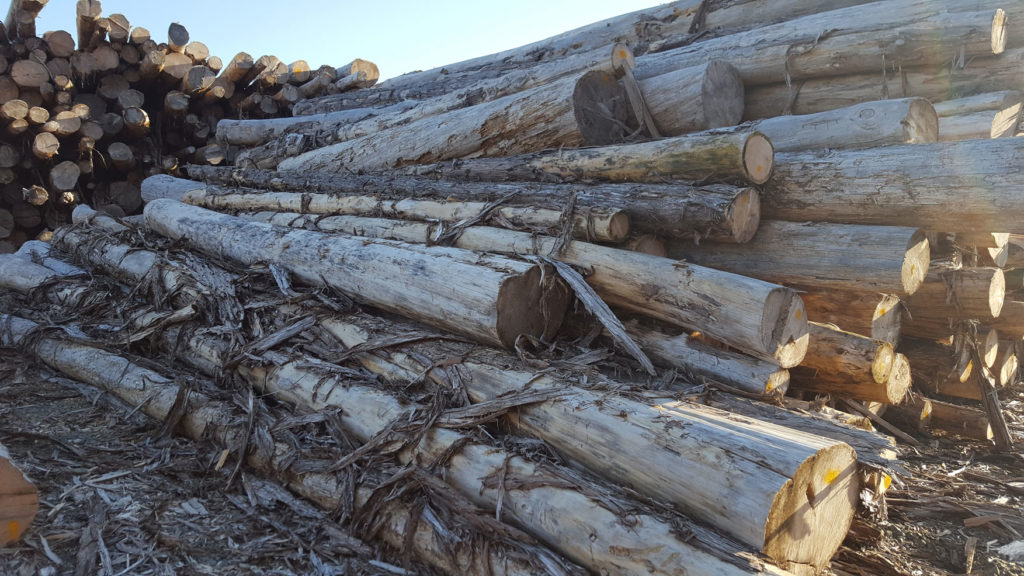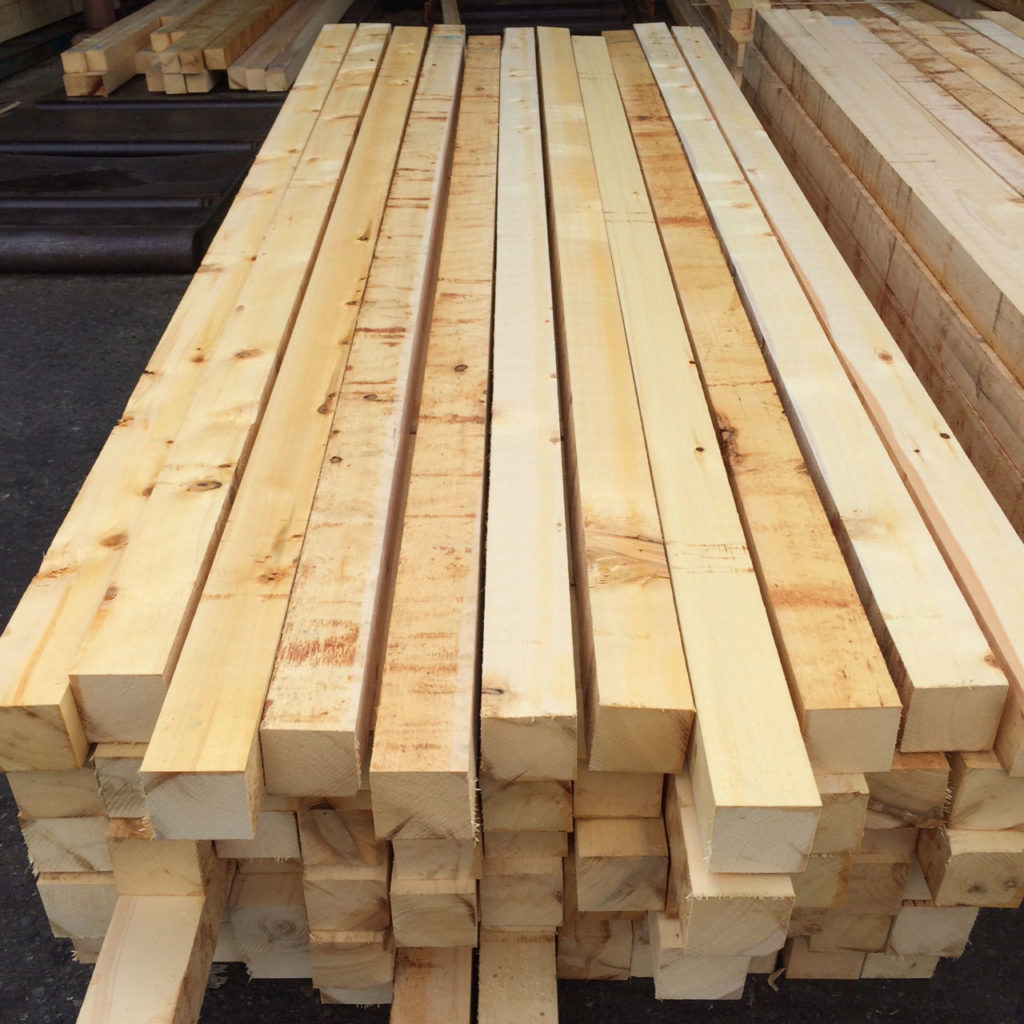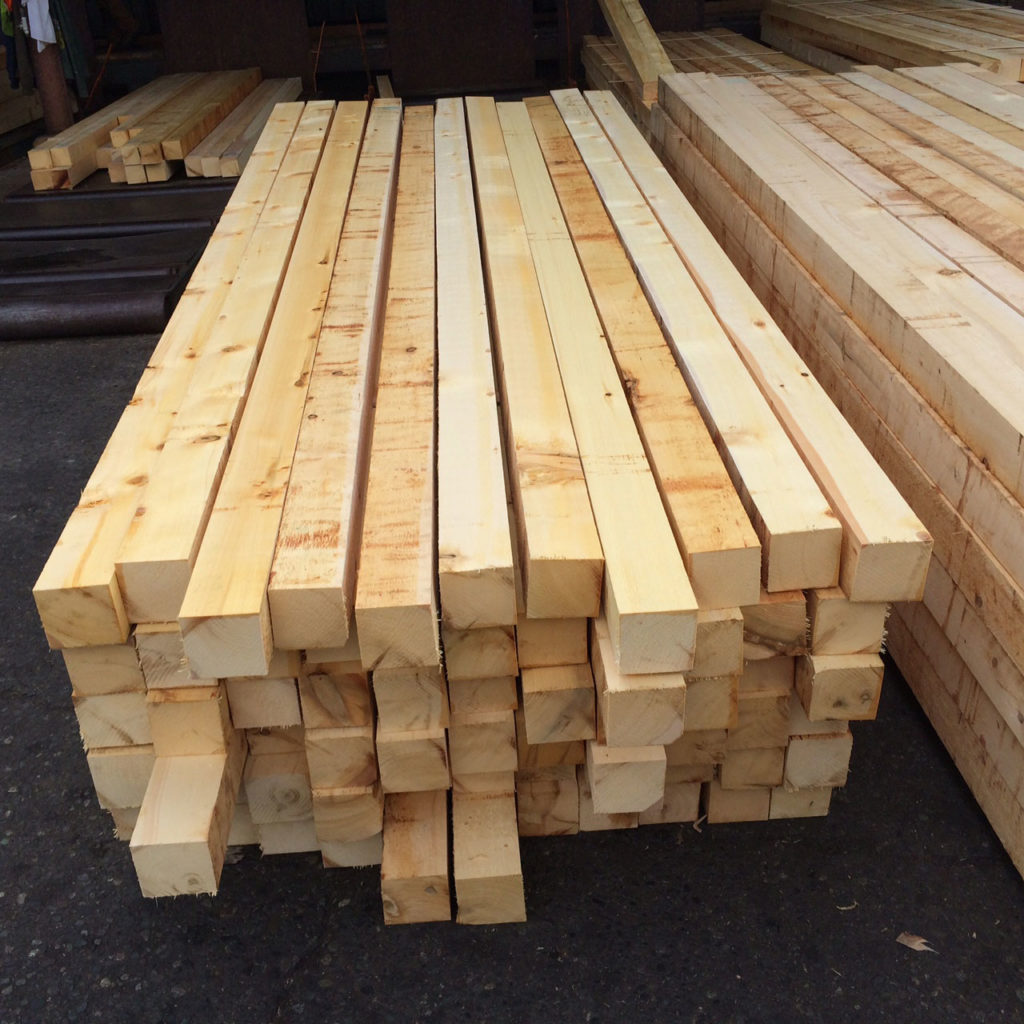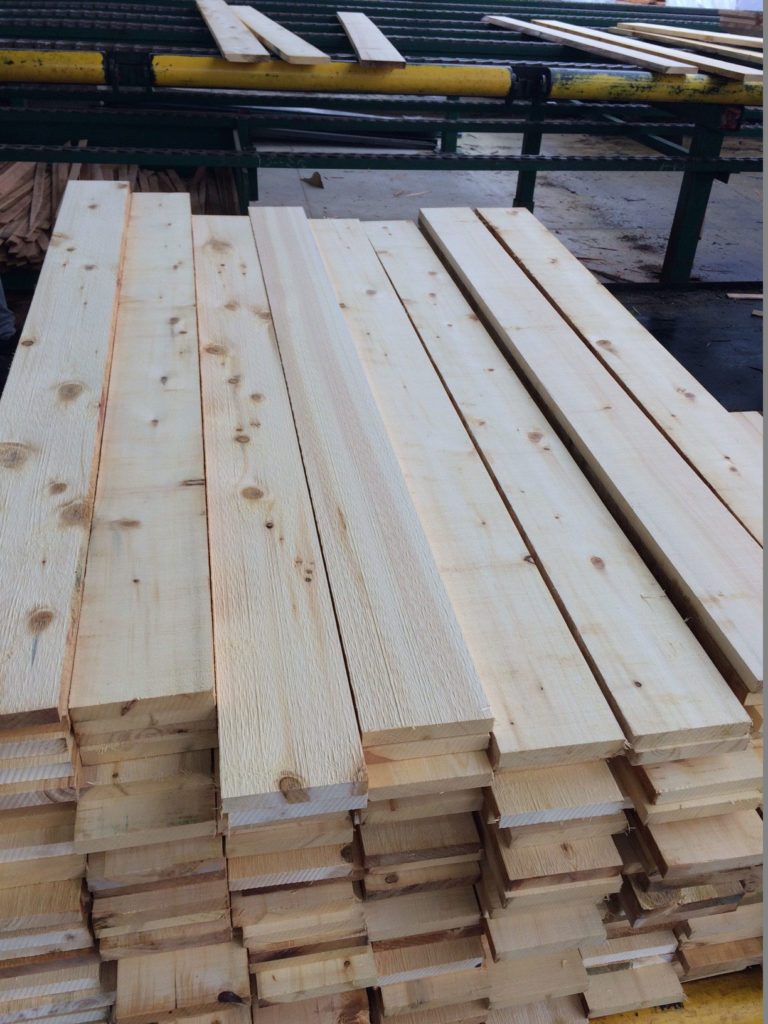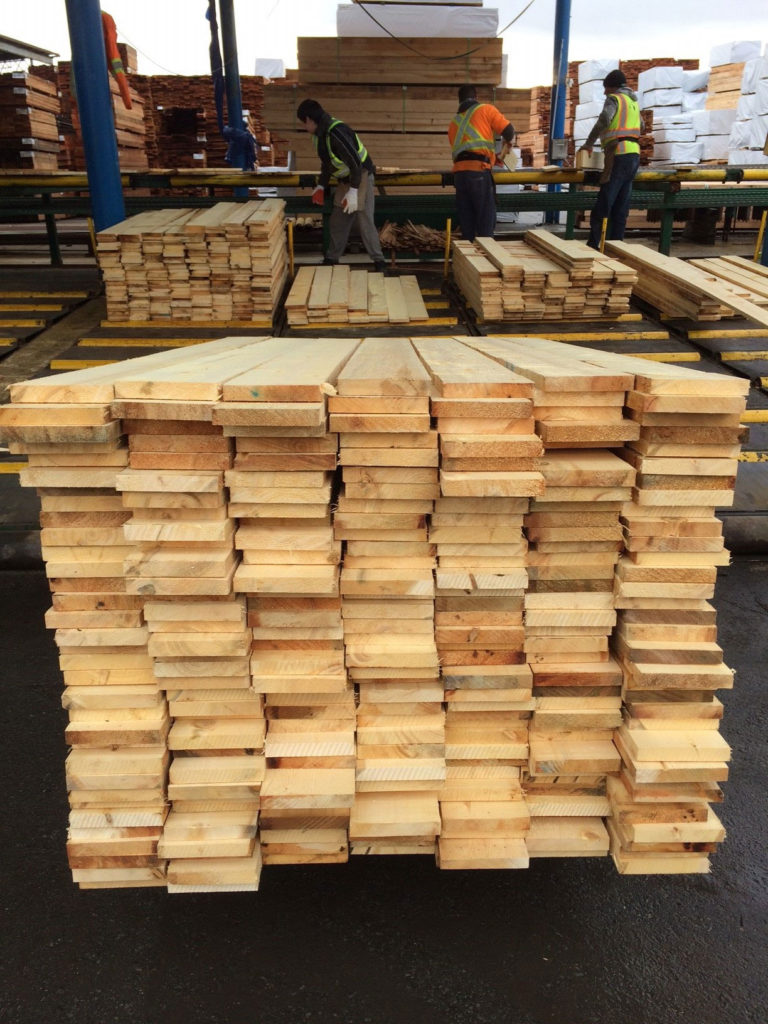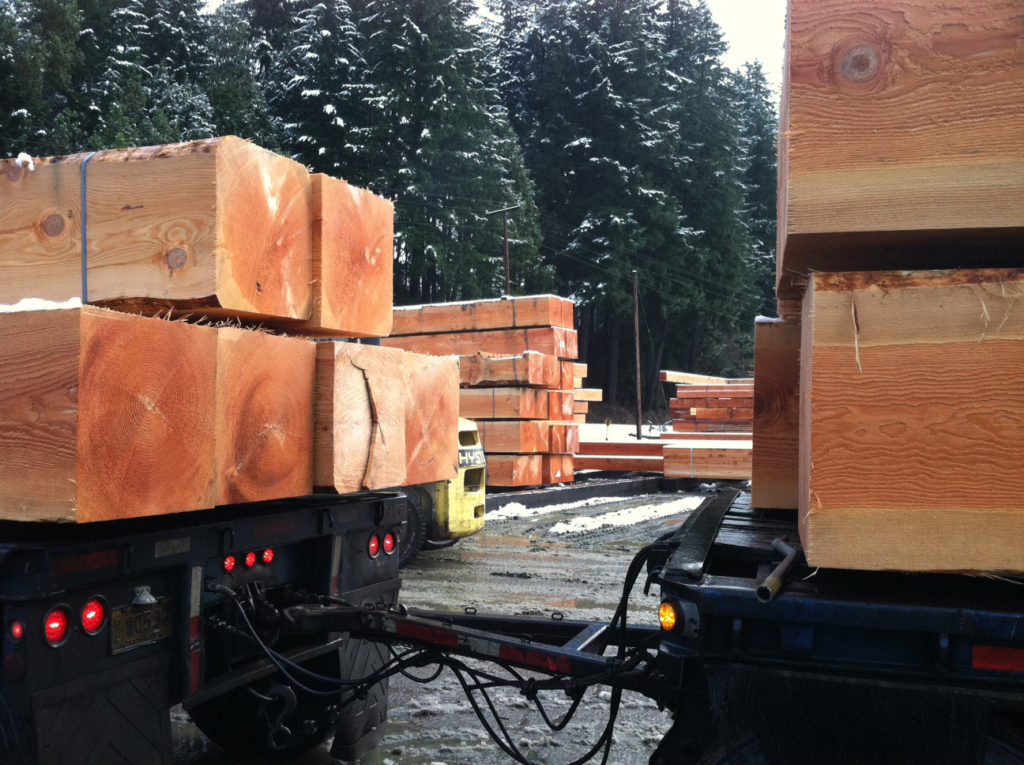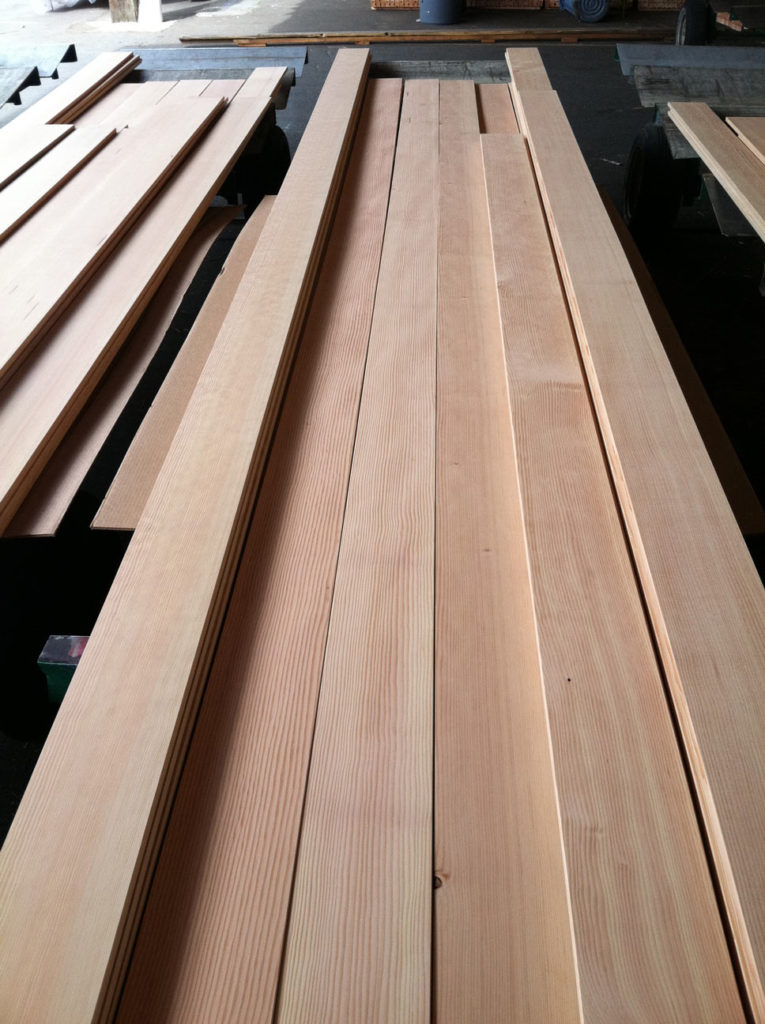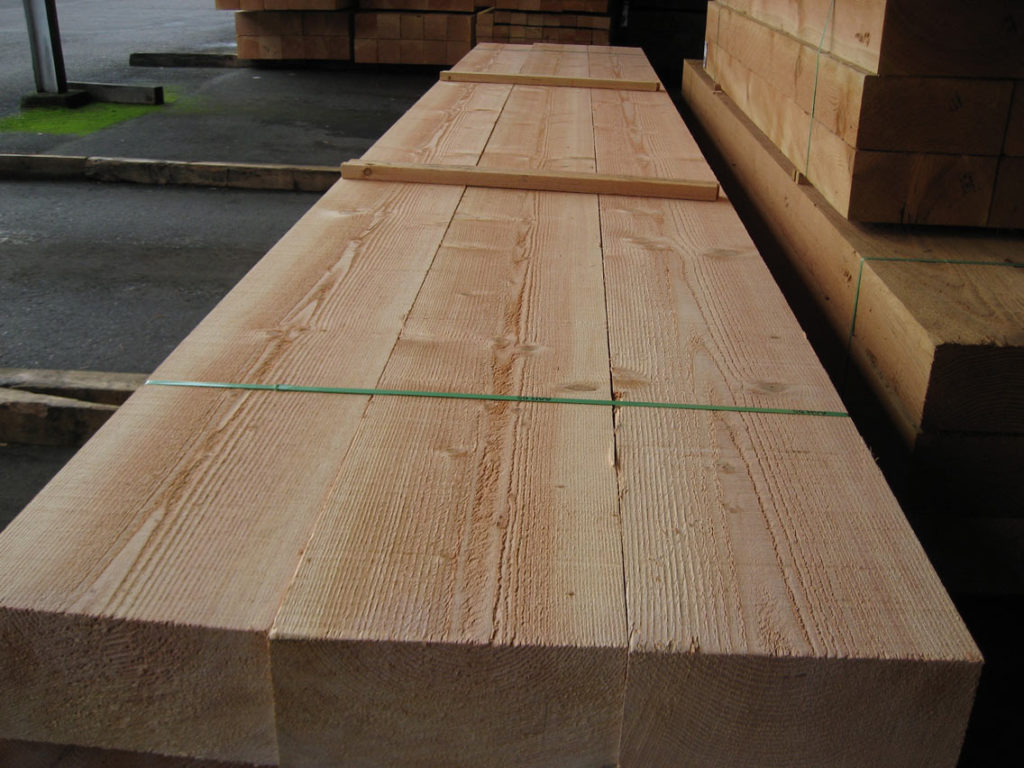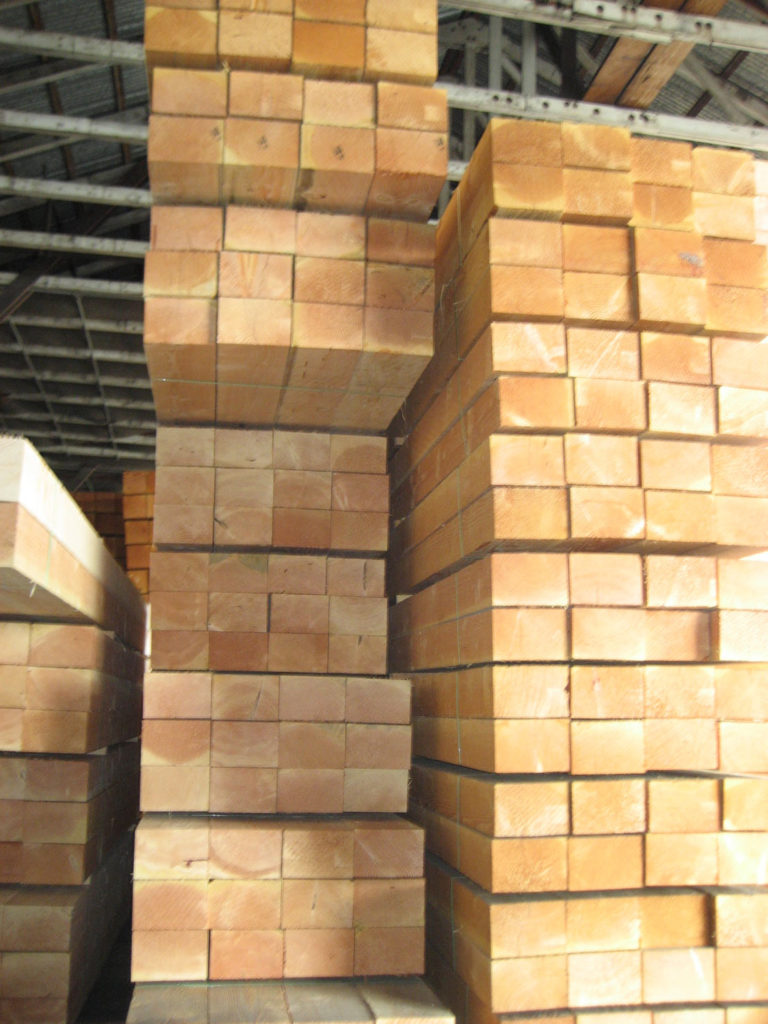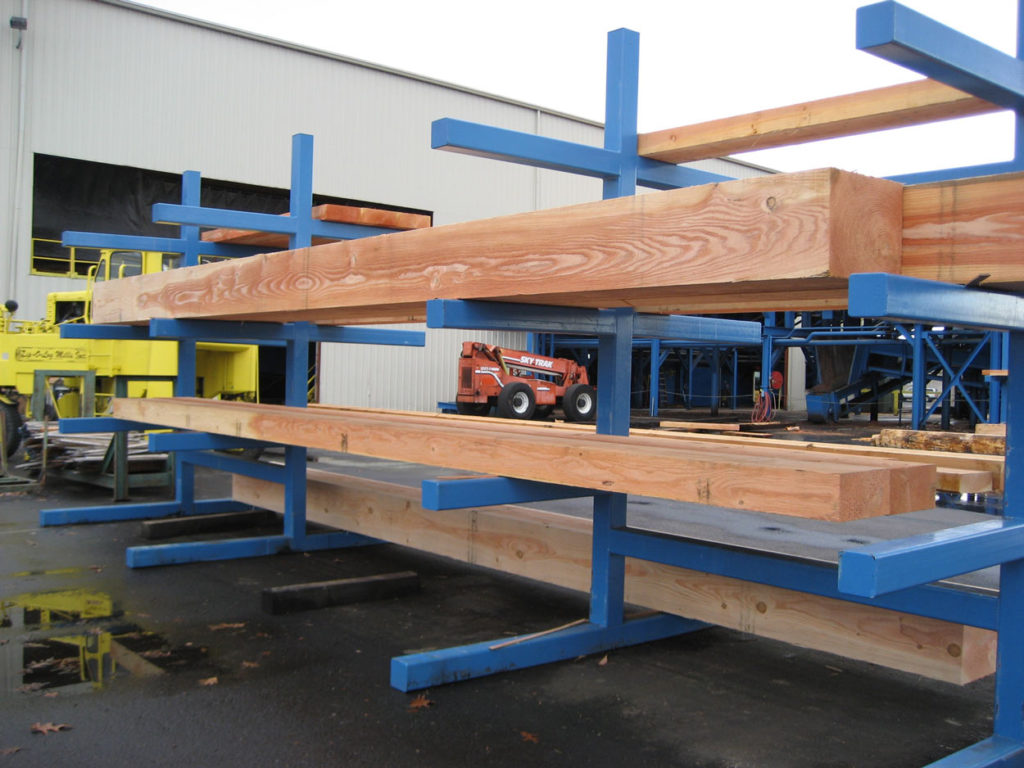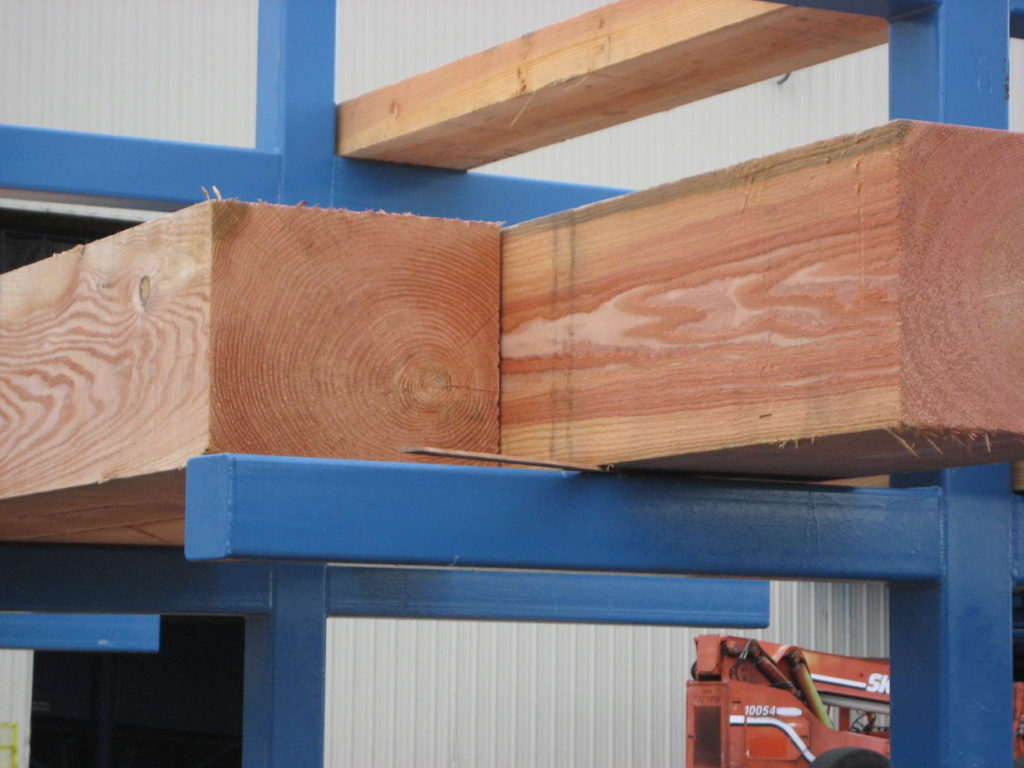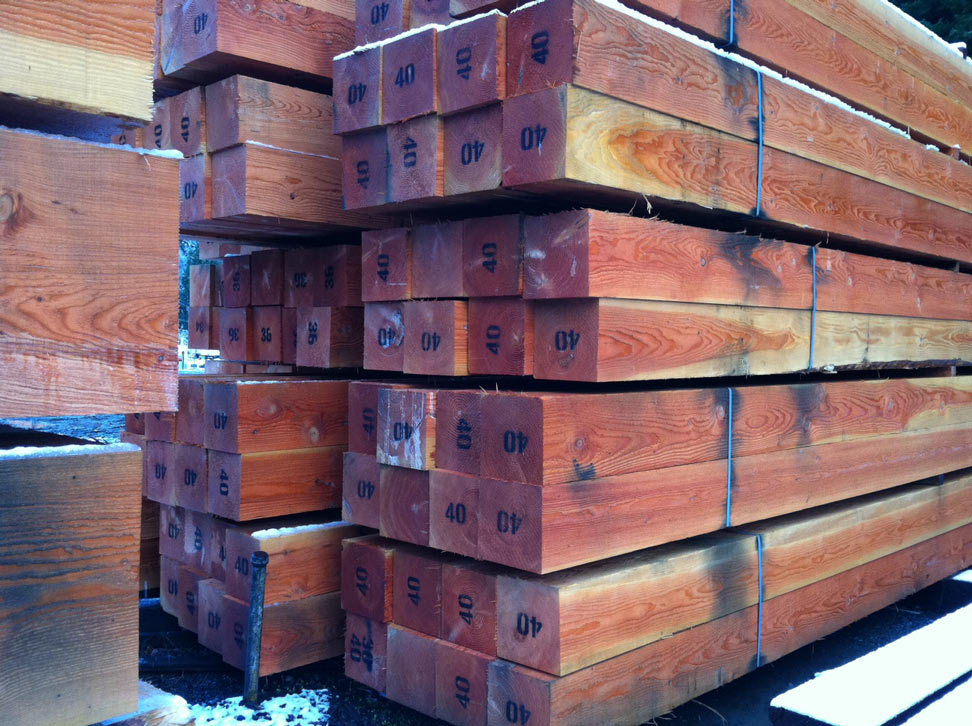Old Deschutes Lumber
our products & descriptionsOld Deschutes Lumber
our products & descriptionsget a quote
western red cedar
As far as commercial soft woods go, Western red cedar is one of the softest. “Oven-dry condition is approximately 21 pounds per cubic foot with a relative density (specific gravity) of .32.” Western Red Cedar’s comparatively low density heightens its insulation value and makes it an attractive choice when transporting and handling. Western Red Cedar shares its water absorption properties with all woods but it has a very low shrinkage factor. This means that it has a higher resistance to warping, twisting and checking more than any other coniferous wood. Thermal insulation is an important consideration in a building material because it indicates how cool a building will remain in the summer and conversely how warm it will stay in the winter. Woods with the lowest density have a higher rate of cell cavities per area, which makes them the best thermal insulators. Western Red Cedar ranks among the best thermal insulator of the readily attainable softwoods. Well-maintained Western Red Cedar will provide decades of enjoyment and durability. “Straight grain and uniform texture” “Clear or knotty grades with smooth surfaced, combed or rough sawn finishes; kiln dried or unseasoned (green); flat grain and vertical grain.”
Western Red Cedar offers a subtle variety of coloring from soft ambers, rustic cinnamons and deep browns. Uses: Siding, decking, fencing, molding, windows, doors, posts, beams, paneling, outdoor projects, interiors and saunas. The incredible aroma of natural cedar offers more than just a pleasing scent. It is a natural deterrent to decay-causing fungi and insects, resists moisture, and aides in preserving the wood. These qualities make Western Red Cedar a natural for the fencing industry.
Native Americans coined the Western Red Cedar the “Tree of Life.”
The low density, low shrinkage factor and high thermal insulation value mean that Western Red Cedar “lies flat, stays straight, and holds fastenings tightly.” It produces boards that are long and lightweight featuring a fine and straight grain and consistent texture. These features work together to produce a wood that is easy to cut, saw, nail, plane or fit to any pattern. This, coupled with a lack of pitch and resin make Western Red Cedar a very workable wood and an excellent choice for holding a stain or paint color. This wood is also very durable and if properly finished can sustain exposure to heat, cold, rain and sun over long periods.
R-List Clears
Grades: A&BTR-VG to D&BTR Clear
Factory Flitch
Shop Grades
FJ Blocks
Cutstock
Pattern Stock
Balusters
Tongue and Groove Paneling
Round Columns
Decking
Fencing
Grades: A&BTR-VG to D&BTR Clear
Factory Flitch
Shop Grades
FJ Blocks
Cutstock
Pattern Stock
Balusters
Tongue and Groove Paneling
Round Columns
Decking
Fencing
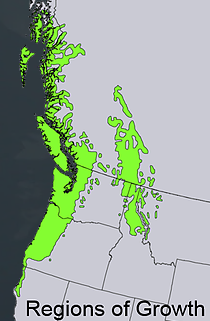
western red cedar
As far as commercial soft woods go, Western red cedar is one of the softest. “Oven-dry condition is approximately 21 pounds per cubic foot with a relative density (specific gravity) of .32.” Western Red Cedar’s comparatively low density heightens its insulation value and makes it an attractive choice when transporting and handling. Western Red Cedar shares its water absorption properties with all woods but it has a very low shrinkage factor. This means that it has a higher resistance to warping, twisting and checking more than any other coniferous wood. Thermal insulation is an important consideration in a building material because it indicates how cool a building will remain in the summer and conversely how warm it will stay in the winter. Woods with the lowest density have a higher rate of cell cavities per area, which makes them the best thermal insulators. Western Red Cedar ranks among the best thermal insulator of the readily attainable softwoods. Well-maintained Western Red Cedar will provide decades of enjoyment and durability. “Straight grain and uniform texture” “Clear or knotty grades with smooth surfaced, combed or rough sawn finishes; kiln dried or unseasoned (green); flat grain and vertical grain.”
Western Red Cedar offers a subtle variety of coloring from soft ambers, rustic cinnamons and deep browns. Uses: Siding, decking, fencing, molding, windows, doors, posts, beams, paneling, outdoor projects, interiors and saunas. The incredible aroma of natural cedar offers more than just a pleasing scent. It is a natural deterrent to decay-causing fungi and insects, resists moisture, and aides in preserving the wood. These qualities make Western Red Cedar a natural for the fencing industry.
Native Americans coined the Western Red Cedar the “Tree of Life.”
The low density, low shrinkage factor and high thermal insulation value mean that Western Red Cedar “lies flat, stays straight, and holds fastenings tightly.” It produces boards that are long and lightweight featuring a fine and straight grain and consistent texture. These features work together to produce a wood that is easy to cut, saw, nail, plane or fit to any pattern. This, coupled with a lack of pitch and resin make Western Red Cedar a very workable wood and an excellent choice for holding a stain or paint color. This wood is also very durable and if properly finished can sustain exposure to heat, cold, rain and sun over long periods.
R-List Clears
Grades: A&BTR-VG to D&BTR Clear
Factory Flitch
Shop Grades
FJ Blocks
Cutstock
Pattern Stock
Balusters
Tongue and Groove Paneling
Round Columns
Decking
Fencing
Grades: A&BTR-VG to D&BTR Clear
Factory Flitch
Shop Grades
FJ Blocks
Cutstock
Pattern Stock
Balusters
Tongue and Groove Paneling
Round Columns
Decking
Fencing

inland red cedar
The main difference between Inland Red Cedar and Western Red Cedar is indicated in the name. This cedar is grown inland whereas the Western Red Cedar is grown in coastal areas. Inland Red Cedar is grown in the Rocky Mountains in Idaho, Montana, and into eastern British Columbia and Alberta. It thrives in high elevations and dry climates making the trees small and the wood a bit lighter than
some of the other cedar species. These trees are slow growing which leads to a tighter fiber and very small, tight knots. This board is lighter than Western Red Cedar and has a creamy-caramel hue to it.
Inland Red Cedar works well for interior or exterior projects. It is mainly used in the production of boxes, caskets, exterior moldings, shakes, shingles, shipbuilding, fencing, decking and siding.
Boxes
Caskets
Exterior moldings
Shakes
Shingles
Ship building
Siding
Fencing
Decking
Caskets
Exterior moldings
Shakes
Shingles
Ship building
Siding
Fencing
Decking
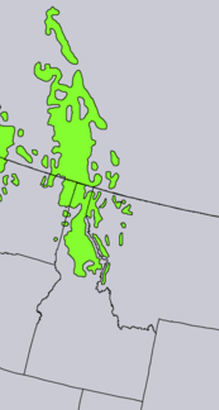
inland red cedar
The main difference between Inland Red Cedar and Western Red Cedar is indicated in the name. This cedar is grown inland whereas the Western Red Cedar is grown in coastal areas. Inland Red Cedar is grown in the Rocky Mountains in Idaho, Montana, and into eastern British Columbia and Alberta. It thrives in high elevations and dry climates making the trees small and the wood a bit lighter than
some of the other cedar species. These trees are slow growing which leads to a tighter fiber and very small, tight knots. This board is lighter than Western Red Cedar and has a creamy-caramel hue to it.
Inland Red Cedar works well for interior or exterior projects. It is mainly used in the production of boxes, caskets, exterior moldings, shakes, shingles, shipbuilding, fencing, decking and siding.
Boxes
Caskets
Exterior moldings
Shakes
Shingles
Ship building
Siding
Fencing
Decking
Caskets
Exterior moldings
Shakes
Shingles
Ship building
Siding
Fencing
Decking

port orford cedar
Port Orford Cedar is also known as Oregon Cypress and Pacific White Cypress as it is a member of the Cypress Family. It is a wood that stands above the competition as far as strength while still being easy to work with. Port Orford is light in color with a straight, fine grain. These trees are usually 150-200’ in height and 4-6’ in diameter. They were given the name Port Orford Cedar because they were originally discovered near Port Orford, Oregon.
Board Footage Calculator
Regions of Growth
Port Orford Cedar was traditionally used for boat making and construction of Japanese Sacred temples. Today its workability and notable strength make it the perfect choice for a variety of projects. It is used for venetian blinds, doors, interior finish work, hope chests, decking, musical instruments, boats and woodcarving, flooring, and fencing. It also has a straight grain that makes it a natural choice for arrow shafts. This wood is known for its durability and resistance to splintering making it an ideal choice for construction projects that will be used by children. Its light color facilitates staining to any shade and makes it an ideal choice for any style. In addition to the aforementioned traits Port Orford Cedar has a sweet-spicy aroma similar to ginger that makes it naturally insect resistant.
Port Orford has a specific gravity of 0.40 and weighs about 27 pounds per cubic foot with an 8% moisture content. This makes it comparable to Eastern Hemlock but a bit heavier than Eastern White Pine. It is 45% stronger than Redwood or Western Red Cedar in impact bending and 30% stronger in crushing strength. Port Orford has been used for seats in the beautiful Rose Bowl in Pasadena, California, for benches in Yosemite National Park and for America’s Cup Yachts. Its durability and strength, not to mention natural beauty and adaptable coloring make it a preferred choice for many builders.
Venetian blinds
Doors
Interior finish work
Hope chests
Deck planking
Musical instruments
Boats
Woodcarving
Fencing
Decking
Doors
Interior finish work
Hope chests
Deck planking
Musical instruments
Boats
Woodcarving
Fencing
Decking
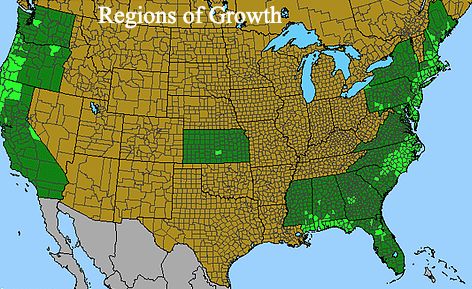
port orford cedar
Port Orford Cedar is also known as Oregon Cypress and Pacific White Cypress as it is a member of the Cypress Family. It is a wood that stands above the competition as far as strength while still being easy to work with. Port Orford is light in color with a straight, fine grain. These trees are usually 150-200’ in height and 4-6’ in diameter. They were given the name Port Orford Cedar because they were originally discovered near Port Orford, Oregon.
Board Footage Calculator
Regions of Growth
Port Orford Cedar was traditionally used for boat making and construction of Japanese Sacred temples. Today its workability and notable strength make it the perfect choice for a variety of projects. It is used for venetian blinds, doors, interior finish work, hope chests, decking, musical instruments, boats and woodcarving, flooring, and fencing. It also has a straight grain that makes it a natural choice for arrow shafts. This wood is known for its durability and resistance to splintering making it an ideal choice for construction projects that will be used by children. Its light color facilitates staining to any shade and makes it an ideal choice for any style. In addition to the aforementioned traits Port Orford Cedar has a sweet-spicy aroma similar to ginger that makes it naturally insect resistant.
Port Orford has a specific gravity of 0.40 and weighs about 27 pounds per cubic foot with an 8% moisture content. This makes it comparable to Eastern Hemlock but a bit heavier than Eastern White Pine. It is 45% stronger than Redwood or Western Red Cedar in impact bending and 30% stronger in crushing strength. Port Orford has been used for seats in the beautiful Rose Bowl in Pasadena, California, for benches in Yosemite National Park and for America’s Cup Yachts. Its durability and strength, not to mention natural beauty and adaptable coloring make it a preferred choice for many builders.
Venetian blinds
Doors
Interior finish work
Hope chests
Deck planking
Musical instruments
Boats
Woodcarving
Fencing
Decking
Doors
Interior finish work
Hope chests
Deck planking
Musical instruments
Boats
Woodcarving
Fencing
Decking

incense cedar
This species of cedar is also known as California White Cedar. Incense cedar trees grow natively in the forests of inland Northern California and Southern Oregon. These trees grow from 65-100 feet tall with a 3-5ft trunk diameter. Expect to see a light to medium reddish brown coloring in these boards with the sap wood being closer to off-white. Incense cedar has a beautiful straight, consistent grain with a medium to fine texture.
Incense cedar has many uses—the most prevalent uses in the modern era has been for pencil manufacturing. It can also be used for venetian blinds, fencing, construction lumber, sheathing, siding and chests. It has a spicy fragrance that is reminiscent of a pencil being sharpened.
Incense Cedar is known to be one of the most stable woods and is prized for projects that will change location. Its stability indicates that it will not warp, check or shrink and it also weathers extremely well. Incense Cedar is very easy to work with and holds paint, stain and any finishing product well.
Pencils
Venetian blinds
Fencing
Construction lumber
Sheathing
Siding
Chests
Venetian blinds
Fencing
Construction lumber
Sheathing
Siding
Chests
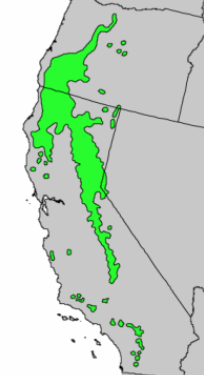
incense cedar
This species of cedar is also known as California White Cedar. Incense cedar trees grow natively in the forests of inland Northern California and Southern Oregon. These trees grow from 65-100 feet tall with a 3-5ft trunk diameter. Expect to see a light to medium reddish brown coloring in these boards with the sap wood being closer to off-white. Incense cedar has a beautiful straight, consistent grain with a medium to fine texture.
Incense cedar has many uses—the most prevalent uses in the modern era has been for pencil manufacturing. It can also be used for venetian blinds, fencing, construction lumber, sheathing, siding and chests. It has a spicy fragrance that is reminiscent of a pencil being sharpened.
Incense Cedar is known to be one of the most stable woods and is prized for projects that will change location. Its stability indicates that it will not warp, check or shrink and it also weathers extremely well. Incense Cedar is very easy to work with and holds paint, stain and any finishing product well.
Pencils
Venetian blinds
Fencing
Construction lumber
Sheathing
Siding
Chests
Venetian blinds
Fencing
Construction lumber
Sheathing
Siding
Chests

alaskan yellow cedar
Grows only in coastal regions of Washington, British Columbia and Alaska. Very slow growing, which makes the growth rings very close together allowing for a consistent color and immense stability. Hardest known cedar in the world. Natural oils make it decay, rot, weather and insect resistant. Very light weight. First used by native North Americans for totem poles and boats.
Floors
Doors
Decks
Ceiling paneling
Woodworking
Millwork
Pergolas
Gazebos
Boat building
Windows
Aircraft construction
Outdoor furniture
Musical instruments
Boxes
Chests
Doors
Decks
Ceiling paneling
Woodworking
Millwork
Pergolas
Gazebos
Boat building
Windows
Aircraft construction
Outdoor furniture
Musical instruments
Boxes
Chests
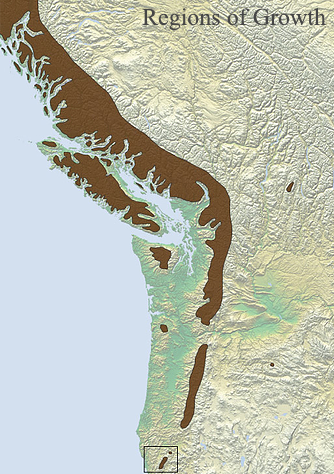
alaskan yellow cedar
Grows only in coastal regions of Washington, British Columbia and Alaska. Very slow growing, which makes the growth rings very close together allowing for a consistent color and immense stability. Hardest known cedar in the world. Natural oils make it decay, rot, weather and insect resistant. Very light weight. First used by native North Americans for totem poles and boats.
Floors
Doors
Decks
Ceiling paneling
Woodworking
Millwork
Pergolas
Gazebos
Boat building
Windows
Aircraft construction
Outdoor furniture
Musical instruments
Boxes
Chests
Doors
Decks
Ceiling paneling
Woodworking
Millwork
Pergolas
Gazebos
Boat building
Windows
Aircraft construction
Outdoor furniture
Musical instruments
Boxes
Chests

douglas fir
Douglas Fir is not truly a fir but a conifer that is native to western North America. Coastal Douglas Fir is the second tallest conifer in the world next to coastal Redwood. It commonly grows 200-500 feet in height with a diameter of 4' to 7'. Doug Fir is one of the most prolific timber products in the world, yielding more timber than any other specie.
It is used for dimensional lumber, timbers, pilings and plywood. It is used extensively in marine applications when treated. Douglas-Fir lumber is a staple in the building industry.
Old Deschutes Lumber can supply your needs from massive timbers reaching 85' in length, to beautiful 1" vertical grain finish.
Dimensional Lumber
Timbers
Pilings
Plywood
Treated Supports
Timbers
Pilings
Plywood
Treated Supports
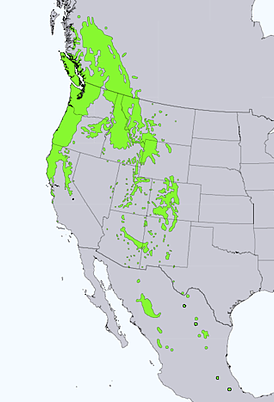
douglas fir
Douglas Fir is not truly a fir but a conifer that is native to western North America. Coastal Douglas Fir is the second tallest conifer in the world next to coastal Redwood. It commonly grows 200-500 feet in height with a diameter of 4' to 7'. Doug Fir is one of the most prolific timber products in the world, yielding more timber than any other specie.
It is used for dimensional lumber, timbers, pilings and plywood. It is used extensively in marine applications when treated. Douglas-Fir lumber is a staple in the building industry.
Old Deschutes Lumber can supply your needs from massive timbers reaching 85' in length, to beautiful 1" vertical grain finish.
Dimensional Lumber
Timbers
Pilings
Plywood
Treated Supports
Timbers
Pilings
Plywood
Treated Supports

alder
Alder is light brown to darker brown in color. There is not much color difference between heartwood & sapwood. The grain pattern is similar to birch. Alder is very easy to work with by machine or hand. It is very easy to laminate, stain, and finish. One of the greatest uses is to substitute this specie for cherry. Alder is the most abundant hardwood available in the Pacific Northwest. It is used for the manufacturing of veneers, furniture, plywood and cabinetry. It is also used for smoking and grilling salmon.
Old Deschutes Lumber can provide Alder from Superior Grades to pallet, and also have great sources on planks for grilling.
Veneers
Furniture
Plywood
Cabinetry
Millwork
Salmon Planks
Furniture
Plywood
Cabinetry
Millwork
Salmon Planks
